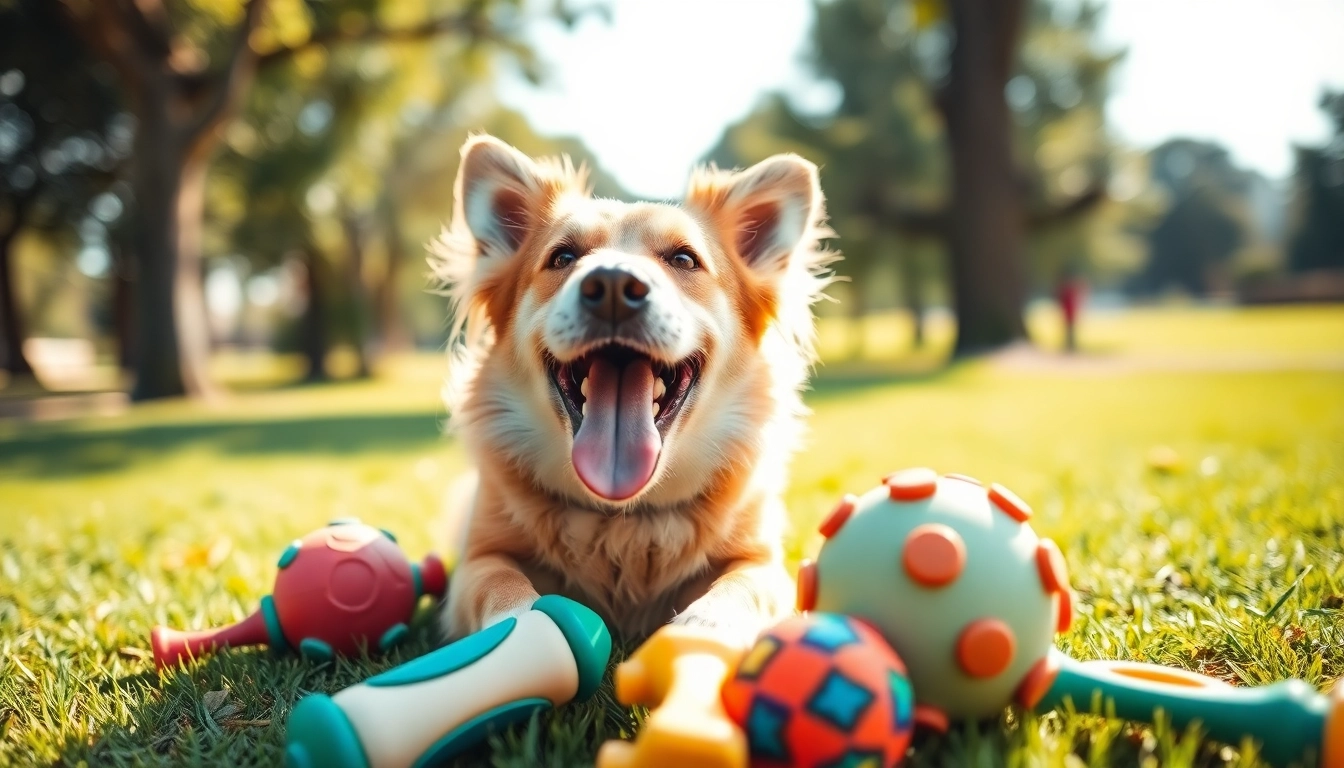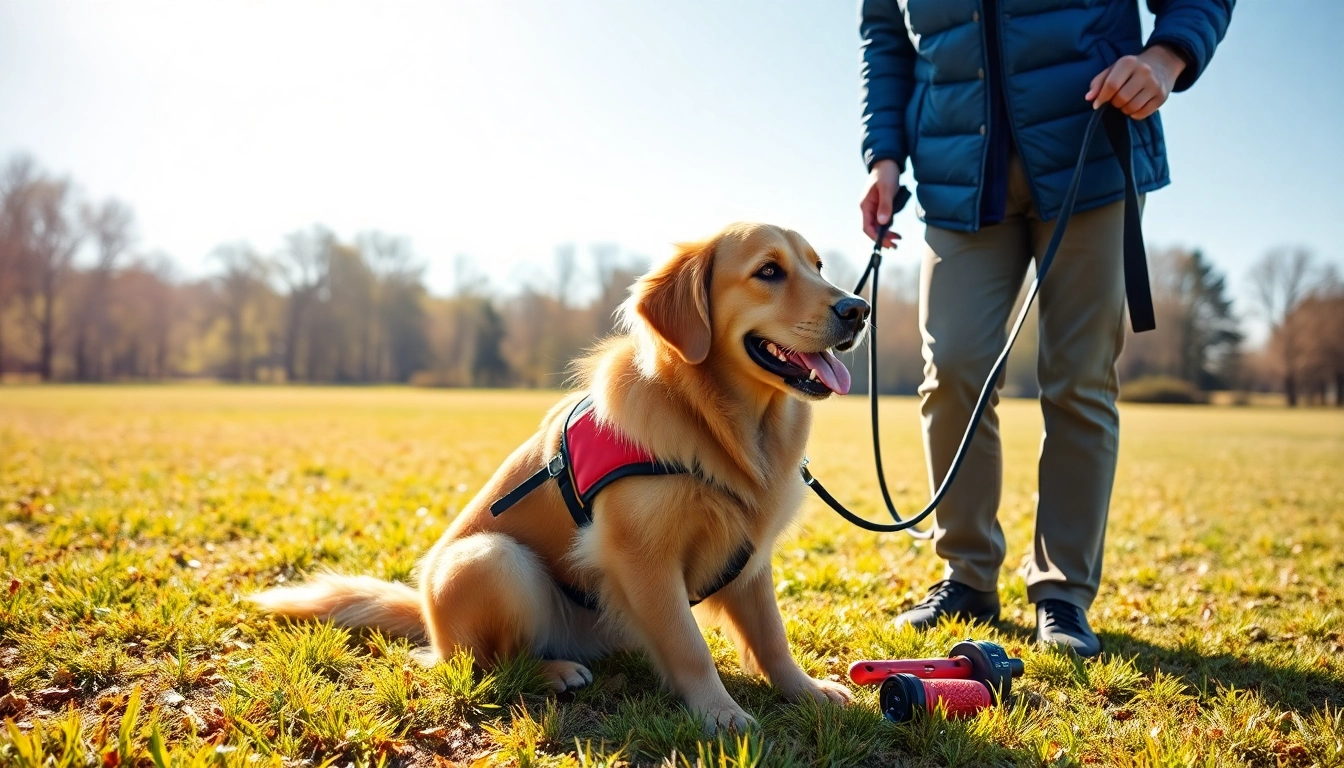Understanding Interactive Dog Toys
What are Interactive Dog Toys?
Interactive dog toys are specially designed to stimulate your dog’s natural instincts to play, think, and problem-solve. Unlike traditional toys that merely entertain, interactive toys actively engage dogs, often incorporating features that require them to figure out how to access treats or achieve specific goals. This interaction not only entertains but also supports mental enrichment, which is essential for a dog’s happiness and well-being.
Benefits of Using Interactive Dog Toys
The advantages of integrating interactive dog toys into your pet’s routine are numerous:
- Mental Stimulation: They challenge dogs to think critically and creatively, preventing boredom and associated behavioral issues.
- Physical Exercise: Many interactive toys require physical activity, helping to keep your dog fit and healthy.
- Reducing Anxiety: Engaging with toys can serve as a distraction during stressful situations, such as being home alone or experiencing loud noises.
- Enhancing Bonding: Playing with interactive toys can enhance the bond between you and your dog, as you can join in the fun and encourage your pet while they play.
Different Types of Interactive Dog Toys
Interactive dog toys encompass a wide variety of types, including:
- Puzzle Toys: These typically involve a mechanism for hiding treats that dogs must work to uncover.
- Treat Dispensers: Toys that dispense treats as the dog plays or manipulates them. This helps keep dogs engaged for longer periods.
- Movement Toys: Some toys move on their own or mimic prey, triggering a dog’s natural instinct to chase.
- Fetch and Tug-of-War Toys: Toys that facilitate games of fetch or tug-of-war help provide physical and mental stimulation through interaction.
How to Choose the Right Interactive Dog Toy
Assessing Your Dog’s Play Style
Every dog has its unique play style. Some may prefer chasing toys, while others might enjoy problem-solving activities. Observe your dog’s natural inclinations to select the right interactive toys that align with their preferences. For example, if your dog loves to chew, durable chew toys that double as puzzles might be ideal.
Material Safety and Toy Durability
When selecting toys, ensure they are made from safe materials. Look for non-toxic, durable materials that can withstand vigorous play without splintering or breaking easily. This is particularly important for aggressive chewers, as the risks of ingesting small pieces of a toy can be dangerous.
Size Considerations for Your Dog
The size of the toy should correspond to your dog’s size and breed. A toy that is too small may pose choking hazards, while one that is too large can be difficult for your dog to handle. Always refer to the manufacturer’s size recommendations to ensure a proper fit.
Tips for Introducing Interactive Dog Toys
Gradual Introduction Techniques
Introducing a new interactive toy should be a gradual process to avoid overwhelming your dog. Start by allowing your pup to sniff and explore the toy before interactive play begins. Encourage them to engage with it independently; this promotes confidence and curiosity.
Supervising Playtime
Always supervise playtime, especially during the initial stages of introduction. This will help you identify how your dog interacts with the new toy, allowing you to step in if they encounter any challenges or get frustrated. Supervision is crucial for ensuring safety, especially with toys that have small parts.
Encouraging Independent Play
While you may want to join in and play, it’s also essential to cultivate independent play. Encourage your dog to explore the toy on their own to foster problem-solving skills and reduce dependency on human interaction for entertainment.
Best Practices for Maintaining Interactive Dog Toys
Cleaning and Hygiene Tips
Regular cleaning is vital to keep your dog’s toys hygienic. Depending on the material, many interactive toys can be washed in warm, soapy water or in the dishwasher. Always check the manufacturer’s instructions for proper cleaning methods to avoid damaging the toys.
Regular Inspection for Wear and Tear
Regularly inspect your dog’s toys for signs of wear and tear. Over time, even the most durable toys can become damaged. Look for cracks, loose parts, or missing pieces and replace any items that could pose a risk to your dog’s health.
Rotating Toys for Increased Engagement
To keep playtime exciting, rotate your dog’s toys regularly. By swapping toys in and out, you maintain your dog’s interest and prevent boredom. This method also allows you to track which toys your dog loves the most and highlights their preferences.
Where to Buy Interactive Dog Toys
Online Retailers vs. Local Stores
When it comes time to purchase new toys, consider both online and local options. Interactive dog toys can often be found more affordably online, with a wide variety of options available. Local stores may provide the advantage of inspecting toys in person before buying.
Identifying Quality Brands
Research and identify brands known for high-quality interactive toys. Look for reputable manufacturers that focus on safety and durability. Pay attention to reviews, both from general consumers and experts in pet care, to inform your choices.
Utilizing Reviews for Informed Choices
Read reviews and testimonials on various platforms to gauge the effectiveness of different interactive toys. Look for feedback from other dog owners regarding durability, engagement levels, and overall satisfaction with the product. Getting multiple perspectives helps to ensure you select toys that will best suit your dog’s needs.



